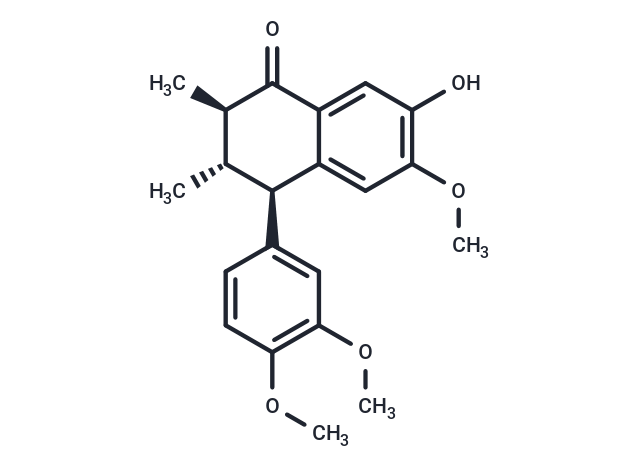Shopping Cart
- Remove All
 Your shopping cart is currently empty
Your shopping cart is currently empty

Epischisandrone is a natural product for research related to life sciences. The catalog number is TN6629 and the CAS number is 98619-26-2.

| Pack Size | Price | Availability | Quantity |
|---|---|---|---|
| 5 mg | $670 | Backorder | |
| 1 mL x 10 mM (in DMSO) | $680 | Backorder |
| Description | Epischisandrone is a natural product for research related to life sciences. The catalog number is TN6629 and the CAS number is 98619-26-2. |
| In vitro | The diethyl ether extract of the stems of Schisandra pubescens Hemsl. et Wils. (Schisandraceae) was found to exhibit cytotoxic activity in vitro. However, investigations of the bioactive constituents of this plant have been very limited. Elucidation of the cytotoxic constituents of S. pubescens was performed. METHODS AND RESULTS: Repeated silica gel column chromatography and preparative TLC were used for the chemical investigation of the diethyl ether extract of S. pubescens stems. All isolates were evaluated for their in vitro cytotoxicity against A549, PC-3, KB and KBvin human cancer cell lines.Nine known compounds were obtained, including four lignans, Epischisandrone (1), tigloylgomisin P (2), cagayanone (3) and (-)-gomisin L2 (4), together with five triterpenoids, micranoic acid B (5), lancifodilactone H (6), coccinic acid (7), schisanlactone B (8) and anwuweizonic acid (9). Compounds 2-6 and 8 showed moderate to marginal cytotoxicity, with with GI?? values of 11.83-35.65?μM. CONCLUSIONS: The isolation of 1-9 from S. pubescens and the cytotoxicities of 3-6 are first reported. Compounds 2-6 and 8 could be the active principles responsible for the anticancer effects of S. pubescens. |
| Molecular Weight | 356.41 |
| Formula | C21H24O5 |
| Cas No. | 98619-26-2 |
| Relative Density. | 1.159 g/cm3 (Predicted) |
| Storage | Powder: -20°C for 3 years | In solvent: -80°C for 1 year | Shipping with blue ice. |

Copyright © 2015-2025 TargetMol Chemicals Inc. All Rights Reserved.